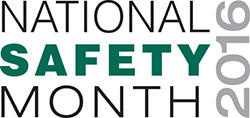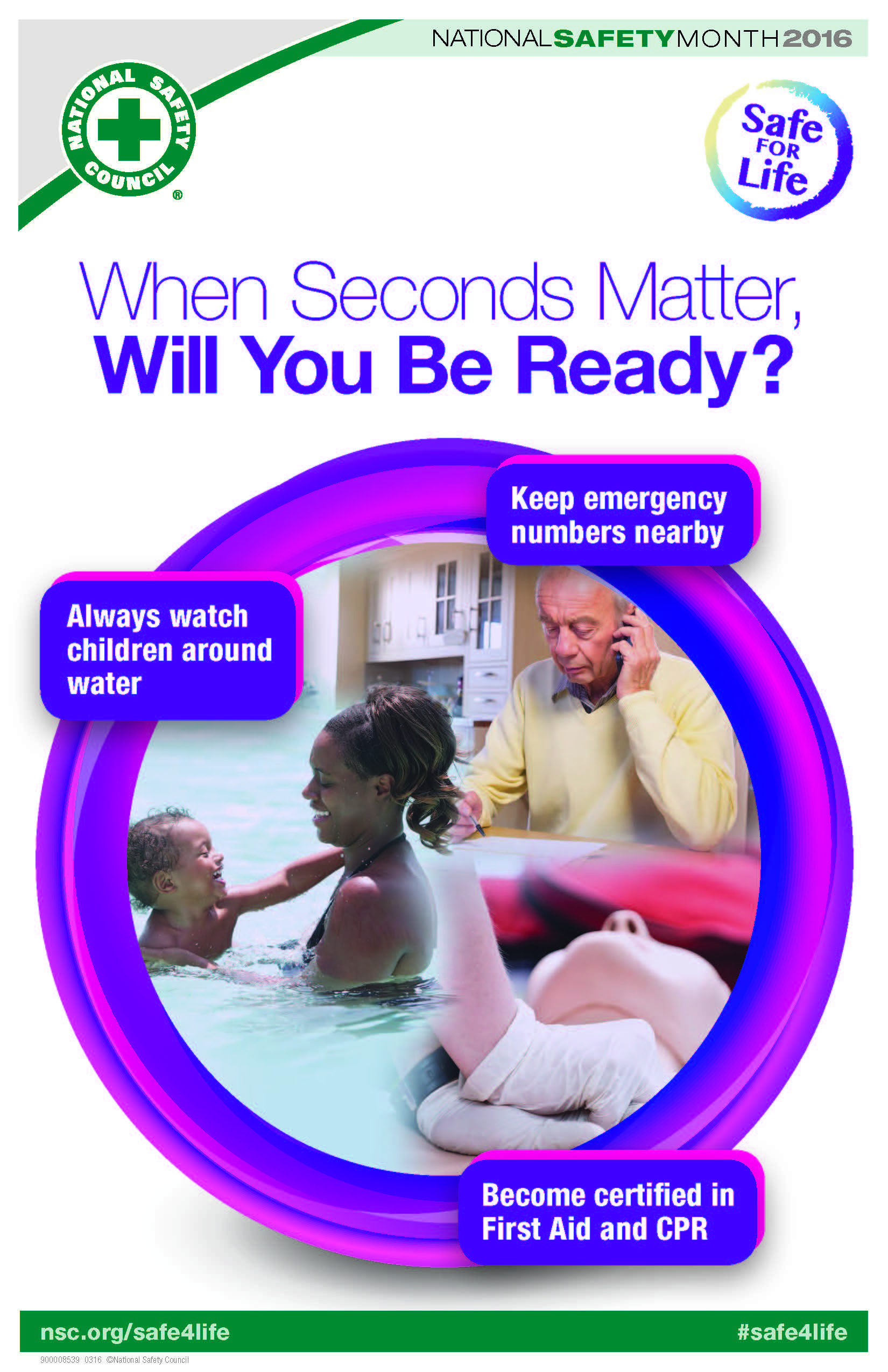
It’s time to stand up for safety. Join us by committing to stay Safe For Life—in the workplace, in homes and communities and everywhere in between. Watch the NSM video and share the message.

- When Seconds Matter, Will You be Ready?
- Tip Sheet: Preparing today can make a difference tomorrow - English and Spanish
- Bonus Fact Sheet: Protect Children Around Water – All the Time
- Related articles:
On any given day, anything can happen, from a slip and fall at home to a natural disaster near your workplace. By assessing potential risks and having a plan to respond, you will be steps ahead in the event of an incident, wherever it occurs.
Get Trained in First Aid and CPR
Even the fastest paramedics could take 8 to 12 minutes to get to a patient after calling 9-1-1. Being trained in first aid and CPR could mean the difference between life and death. When trained in first aid, the following steps are helpful in the event an emergency:
- Recognize the emergency
- Check the area for safety (If it’s not safe, don’t enter)
- Check the victim and ask for permission to provide assistance
- Call 9-1-1 when appropriate
- Care for the person
- Have the person seek medical attention when needed
When calling 9-1-1, be prepared to give this information to the dispatcher:
- Your name
- The phone number you are using
- The location and number of victims
- The victim’s approximate age, sex and condition (Responsive? Breathing? Bleeding?)
- What happened to the victim and any special circumstances
- What is being done for the victim
The dispatcher may also give you instructions on how to help the victim. Stay on the line until the dispatcher says you can hang up. First aid and CPR training gives you the skills you need to handle life’s everyday bumps and bruises, and the confidence to respond quickly andcorrectly to more serious injuries and life-threatening situations that can occur.
Be Prepared for Emergencies
Preparation is key when seconds count. When it comes to natural disasters, be sure to keep a fully stocked emergency preparedness kit in your home and vehicle with supplies such as food, water, necessary medications, a battery powered radio, a flashlight and a first aid kit. Just like you participate in emergency drills at work, be sure to practice with your family. A home fire plan should include checking that smoke detectors are working properly; drawing a diagram of your home, marking the locations of windows and doors; planning two escape routes out of every room; setting up an outside meeting place for after an escape; and practicing the escape plan regularly. Make sure even children know what designated phone number to call in the event your family is separated, and plan for the needs of older family members and pets.

